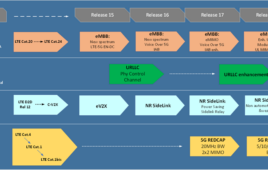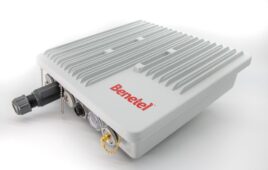By all measures, the iPhone has been a boon to AT&T. The device has sold by the millions, accounting for 2.4 million activations in the second quarter alone. It has raked in hundreds of thousands of new subscribers whose ARPU is 1.6 times that of the company’s average postpaid subscriber. It has helped the company’s data ARPU rise about 26 percent over the past year and contributed to a 37 percent jump in AT&T’s second-quarter wireless data revenue.
However, these figures present a singularly flattering view of the iPhone for the company. For all the good that the device has done for the carrier, it has come at a cost. The devices are heavily subsidized – costing consumers $199 with a subsidy and around $500 without – and practically devour the carrier’s bandwidth.
“AT&T likes to talk about the profitability of the iPhone, but what they don’t tell you is that iPhone users have taxed their network tremendously,” says Stifel Nicolaus analyst Chris King.
 King argues that for all the revenue the iPhone is bringing it, its high ARPU isn’t a true reflection of its return on investment and has “very little correlation to profitability.” Though he does not dispute that the device has been an incredible benefit to the company, he makes the case for a more balanced view of its effect on AT&T’s finances.
King argues that for all the revenue the iPhone is bringing it, its high ARPU isn’t a true reflection of its return on investment and has “very little correlation to profitability.” Though he does not dispute that the device has been an incredible benefit to the company, he makes the case for a more balanced view of its effect on AT&T’s finances.
“Even though iPhone customers are high ARPU and might even be high-margin customers, AT&T is having to spend a lot of money on capex to keep up with the data usage demand that the iPhone customers have,” King says.
He goes so far as to argue that the iPhone has forced AT&T to make concessions in its business strategy, and says they are busy beefing up their existing network instead of pushing ahead to LTE.
Because AT&T does not publicly disclose profitability per device, there are no official figures on just what the iPhone is costing the company to support. And while King and other skeptics suspect that the iPhone is both a burden and a blessing, many others dispute that opinion.
BUSINESS AS USUAL?
Ken Hyers with Technology Business Research argues that its business as usual at the carrier, and disagrees that the iPhone’s heavy presence on the network has affected AT&T’s business strategy.
Arguments that the carrier has slowed its LTE deployment often compare AT&T’s 4G process with that of Verizon Wireless. After all, Verizon is speeding forward with its 4G plans while AT&T implements a HSPA 7.2 software upgrade for its 3G network. The carrier has only just started to vet infrastructure vendors, with technical testing beginning next year and trials in 2011.
Hyers says that there’s no reason for AT&T – which was first in the world with HSDPA in 2006 – to move as quickly as Verizon. “AT&T has very much gone with their plans… they have a lot more data and bandwidth capability with HSPA,” Hyers says. “Verizon from a technical standpoint needs to be a fast mover to LTE to keep with the Joneses, if you will. It’s one of the costs of being CDMA.”
Hyers admits that the iPhone is more demanding on network resources and iPhone customers are more expensive to acquire. However, he argues that the massive benefits reaped by the company have far outweighed the costs. “Never mind what effect it’s had on the network, the quantity and quality of users it’s brought in have more than compensated,” he says.
|
A GOOD KIND OF PROBLEM
Kevin Burden with ABI Research says that although the iPhone is probably causing some capacity problems at AT&T, it’s an issue other carriers would love to be forced to deal with. “The sale of the device is so successful and the usage is so high that AT&T was forced to upgrade the network. Every operator should have such problem,” Burden says. “This is the type of problem they should be dealing with, this is success to them.”
Sluggish data usage would make it difficult for the carrier to recoup its subsidy of the iPhone, posing a much larger problem than an overburdened network, he says. He also points out that even if capacity is a bit tight right now, AT&T has shrewdly positioned itself with a subscriber base very interested in data at the same time it’s getting ready for LTE.
“People want to say that AT&T is running into capacity problems with its iPhone usage, true. The question is how do you acquire more capacity, and there are ways to do that,” he says. He expects that despite its future 4G expansion, AT&T soon will be on the hunt for more spectrum, and predicts it will get that bandwidth from an acquisition, not a spectrum auction.
Arguing that recently launched, satellite-based wireless communications serve a market consisting mainly of “ship captains, explorers and tribal leaders,” Burden argues that companies like SkyTerra are in a prime position to be acquired by a carrier like AT&T.
“Is this something SkyTerra really wants to build or are they just positioning themselves down the road for an acquisition, possibly a spectrum acquisition?” he asks. Such an acquisition would give AT&T the additional spectrum it needs without having to go through a lengthy, painstaking auction process, he says.
LTE ON TARGET
As for what AT&T says of the issue? Company spokesman Mark Siegel says that while there’s no question that iPhone users are heavy users of data, they generate monthly bills well into the $90-plus range. He also says the device’s tremendous demands on the network have in no way stalled AT&T’s 4G plans.
“We have a lot of room to increase speed on 3G… and our LTE rollout is on target,” he says. “Our competitors are in a rush to get to LTE because they’ve chosen not to upgrade 3G.” The carrier will be spending $18 billion in wireless and wireline network buildout this year, adding an additional 2,100 cell cites.
Although the carrier will offer MMS by the end of summer and plans to eventually allow tethering to an Internet connection, those services historically have been disallowed. As Siegel puts it, MMS and tethering eat up so much bandwidth that they could “potentially cause a traffic jam” on the network.
While Siegel says restrictions are necessary to ensure equal quality of service, analysts like King say restrictions are necessary to keep AT&T’s overworked network from crashing.
Finding a definitive answer is an exercise in futility. Like other carriers, AT&T uses a lot of internal financial metrics it does not disclose to the general public. Those metrics likely paint a much more complete picture of the company and the profitability of the iPhone than the metrics currently available to the public.





